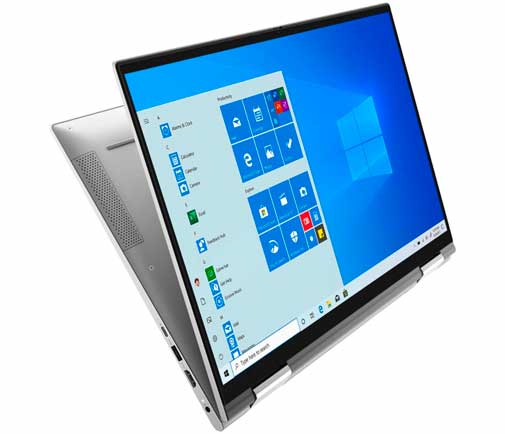Are you on the hunt for a laptop that won’t break the bank? Buying a used laptop can be an excellent way to score powerful technology at a fraction of the original price. Whether you’re a student, professional, or casual user, there’s something satisfying about finding that perfect secondhand gem. But where do you start? Understanding the benefits and knowing what to look for can transform your shopping experience from daunting to delightful. Dive in with us as we explore everything you need to know about purchasing a pre-owned laptop!
Benefits of buying a used laptop
Buying a used laptop offers substantial savings. You can access high-end models at a fraction of their retail prices. This allows you to invest in better specifications without straining your budget.
Environmental impact is another appealing factor. By choosing pre-owned devices, you contribute to reducing electronic waste. It’s a small but meaningful step towards sustainability.
The variety available in the secondhand market is impressive. From older models with unique features to refurbished ones that perform like new, options abound.
Additionally, many sellers offer warranties on certified used laptops, giving you peace of mind with your purchase. This means you’re not just buying someone else’s old tech; you’re gaining reliability and assurance alongside value.
Purchasing used laptops often leads to discovering rare or discontinued models that might no longer be found in stores—perfect for enthusiasts looking for something special!
Factors to consider when buying a used laptop
When purchasing a used laptop, several factors come into play. First, consider the specifications. Ensure it meets your needs for tasks like gaming, graphic design, or basic browsing.
Next, examine the brand and model. Some brands are known for durability and support. Research reviews to understand performance over time.
Look at battery life as well. Used laptops may have diminished capacity. Ask about previous usage patterns that could affect longevity.
Another aspect is warranty status. A remaining manufacturer’s warranty can offer peace of mind. If not available, see if the seller offers any guarantees.
Don’t forget about software compatibility too; older models might struggle with newer applications or operating systems.
Assess the laptop’s physical condition carefully—scratches on screens or worn-out keyboards can signal deeper issues waiting to emerge down the line.
Where to buy a used laptop
Searching for a used laptop opens up several avenues. Online marketplaces like eBay and Craigslist are popular choices. They offer a vast range of options, but always exercise caution.
Consider certified refurbishers as well. Websites such as Gazelle or Back Market specialize in refurbished devices that come with warranties, providing peace of mind.
Local electronics stores sometimes have used laptops available too. Visiting these shops allows you to physically inspect the device before purchasing.
Don’t overlook college campuses. Students often sell their laptops at reasonable prices when upgrading or graduating.
Social media platforms can also be valuable resources. Groups dedicated to buying and selling tech gear frequently pop up on Facebook, offering local deals.
Take your time exploring various sources to find the best deal that meets your needs.
How to inspect a used laptop before purchase
When inspecting a used laptop, start with the exterior. Check for scratches, dents, or any signs of damage. A clean casing usually indicates better care.
Next, open the laptop and power it on. Observe how quickly it boots up and ensure that the display is clear without dead pixels or discoloration. Test the keyboard and trackpad for responsiveness; they should feel comfortable to use.
Inspect ports and connections too. Try plugging in USB devices or headphones to ensure everything works correctly. Pay attention to battery life as well—ask about its current performance.
Run a quick software check by opening applications like web browsers or word processors. Look for any unusual lagging or freezing during normal tasks; this could hint at deeper issues waiting to surface later on.
Tips for negotiating the price of a used laptop
Negotiating the price of a used laptop can be both an art and a science. Start by doing your homework. Research similar models online to understand what they typically sell for.
When you approach the seller, be polite but assertive. Express genuine interest in the laptop while pointing out any flaws or missing accessories that could justify a lower price.
Don’t hesitate to make the first offer, even if it’s below your budget. This sets the stage for negotiations. Be prepared to walk away if you feel the deal isn’t fair; this shows you’re serious about getting value for your money.
Timing matters too—try negotiating at off-peak hours when sellers might be more willing to strike a deal. Keep emotions in check; staying calm will help you think clearly during discussions.
What to do after purchasing a used laptop
Once you’ve made your purchase, it’s time to set up your new device. Start by thoroughly cleaning the laptop. A gentle wipe can make a big difference.
Next, check the operating system and software already installed. You may want to update or reinstall the OS for optimal performance. This ensures you have the latest security patches and features.
Don’t forget about data security. Set strong passwords and enable any available encryption options.
Back up important files immediately after setting everything up. This way, you’re protected against potential data loss.
Consider investing in antivirus software to safeguard your information from threats online.
Familiarize yourself with its specifications and capabilities so you can utilize it effectively for your needs moving forward. Enjoy discovering what this used laptop has to offer!
Conclusion
Buying a used laptop can be an excellent way to save money while still obtaining a reliable device. With careful consideration and proper inspection, you can find a machine that meets your needs without breaking the bank. Remember to take your time during the buying process—whether you’re exploring online marketplaces or local shops—and don’t hesitate to negotiate for a better price.
After making your purchase, ensure you give your new device some TLC by performing updates and checking for any issues. This will help maximize its lifespan and performance.
With these tips in mind, you’re well-equipped to navigate the used laptop market confidently. Happy shopping!

